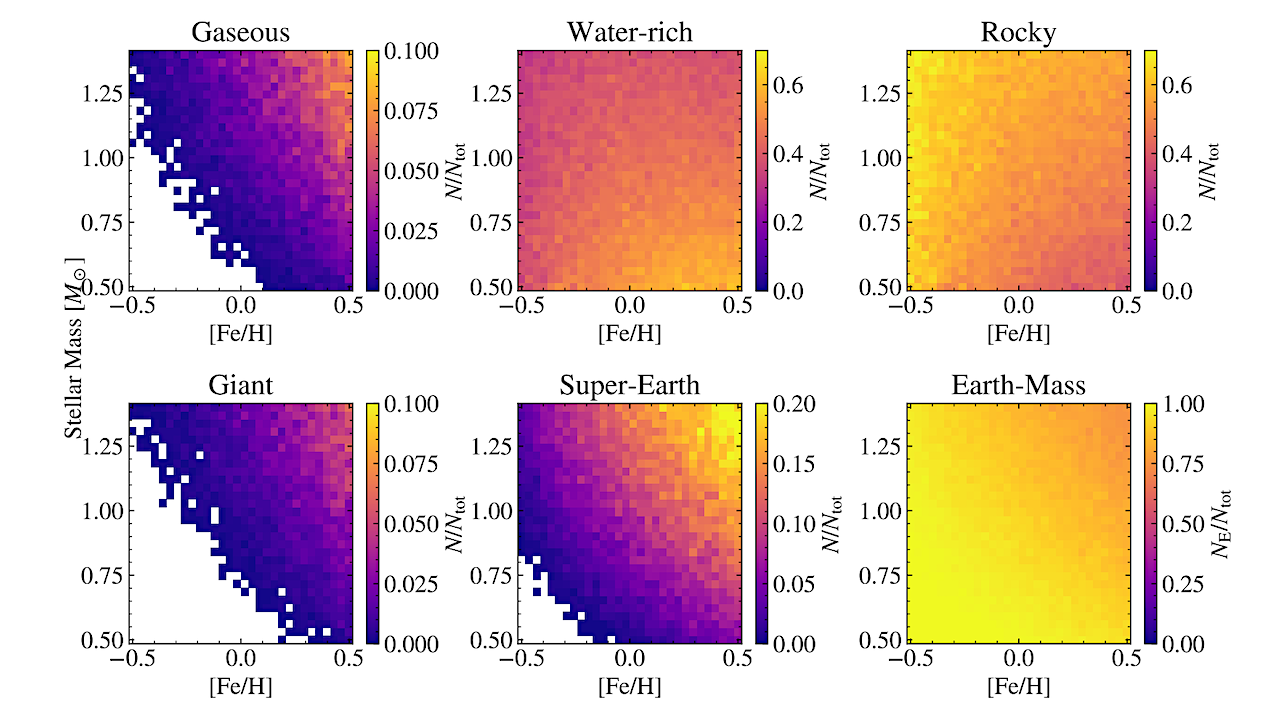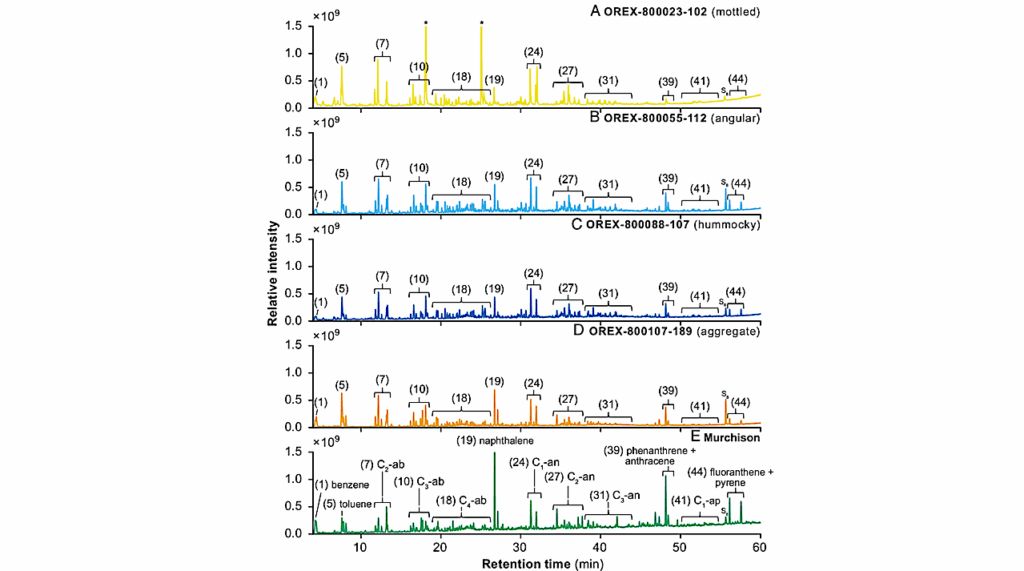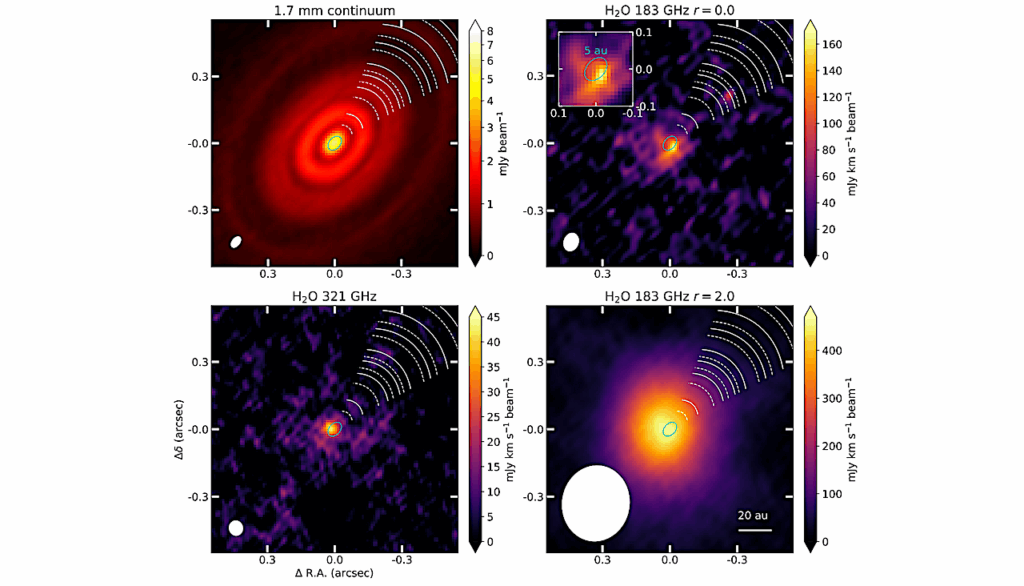Planet Formation Throughout The Milky Way: Planet Populations In The Context Of Galactic Chemical Evolution

As stellar compositions evolve over time in the Milky Way, so will the resulting planet populations. In order to place planet formation in the context of Galactic chemical evolution, we make use of a large (N=5325) stellar sample representing the thin and thick discs, defined chemically, and the halo, and we simulate planet formation by pebble accretion around these stars.
We build a chemical model of their protoplanetary discs, taking into account the relevant chemical transitions between vapour and refractory minerals, in order to track the resulting compositions of formed planets. We find that the masses of our synthetic planets increase on average with increasing stellar metallicity [Fe/H] and that giant planets and super-Earths are most common around thin-disc (α-poor) stars since these stars have an overall higher budget of solid particles.
Giant planets are found to be very rare (≲1%) around thick-disc (α-rich) stars and nearly non-existent around halo stars. This indicates that the planet population is more diverse for more metal-rich stars in the thin disc. Water-rich planets are less common around low-metallicity stars since their low metallicity prohibits efficient growth beyond the water ice line.
If we allow water to oxidise iron in the protoplanetary disc, this results in decreasing core mass fractions with increasing [Fe/H]. Excluding iron oxidation from our condensation model instead results in higher core mass fractions, in better agreement with the core-mass fraction of Earth, that increase with increasing [Fe/H].
Our work demonstrates how the Galactic chemical evolution and stellar parameters, such as stellar mass and chemical composition, can shape the resulting planet population.
Jesper Nielsen, Matthew Raymond Gent, Maria Bergemann, Philipp Eitner, Anders Johansen
Comments: 21 pages, 16 figures, accepted in A&A
Subjects: Earth and Planetary Astrophysics (astro-ph.EP); Astrophysics of Galaxies (astro-ph.GA); Solar and Stellar Astrophysics (astro-ph.SR)
Cite as: arXiv:2308.15504 [astro-ph.EP] (or arXiv:2308.15504v1 [astro-ph.EP] for this version)
https://doi.org/10.48550/arXiv.2308.15504
Focus to learn more
Submission history
From: Jesper Nielsen
[v1] Tue, 29 Aug 2023 11:58:57 UTC (3,749 KB)
https://arxiv.org/abs/2308.15504
Astrobiology








